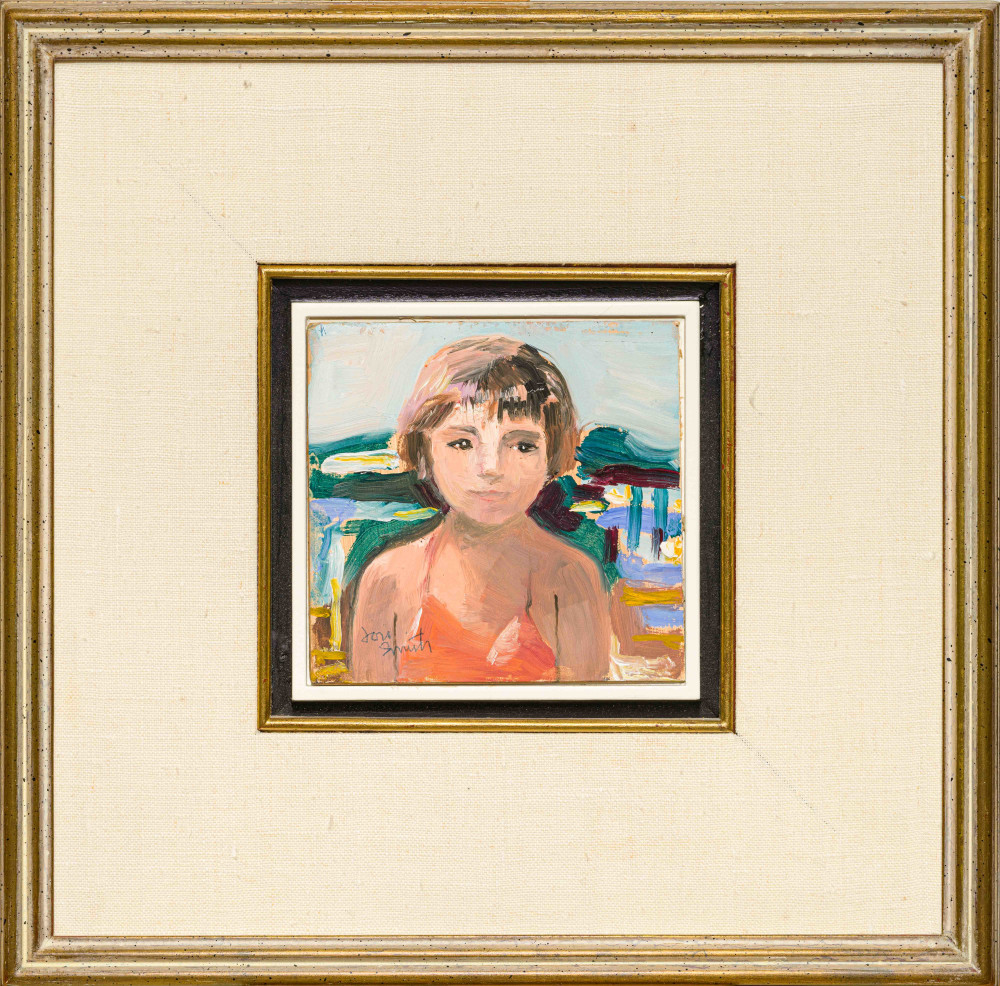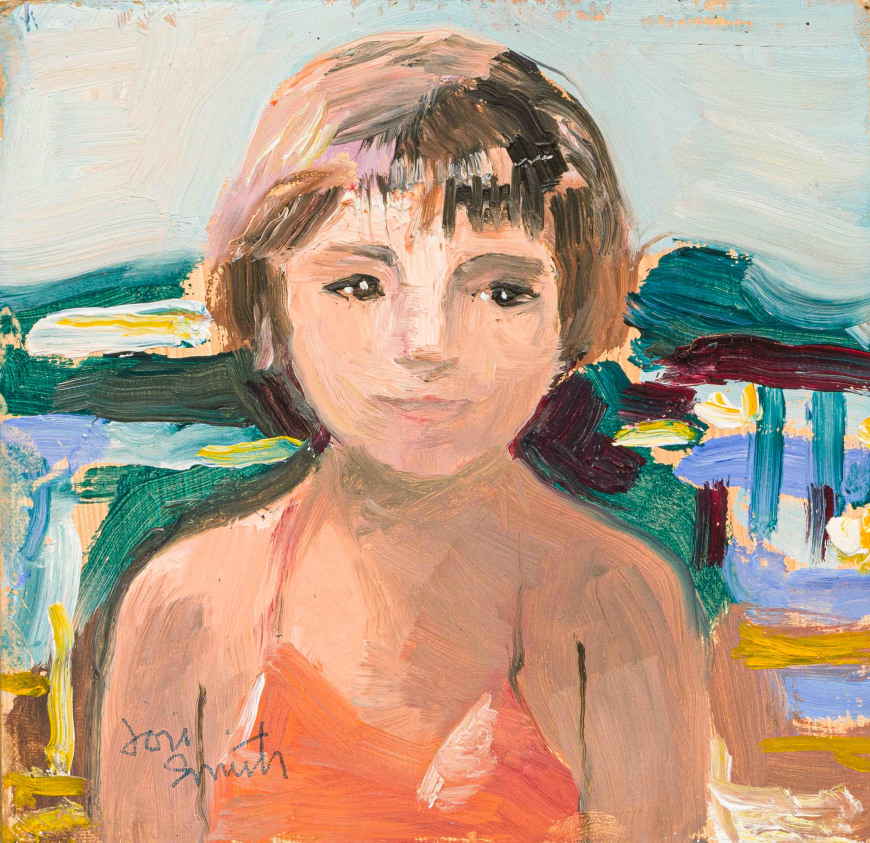-
Artworks
Jori SmithJeune fille1907-2005Oil on panel4 1/4 x 4 inThis painting is presently on view at our Montreal gallery
10.8 x 10.2 cmSoldInscriptions
signed, ‘ Jori Smith’ (lower left); signed, ‘Jori Smith’ (verso)Provenance
Kastel Gallery, Westmount, Quebec
Property of a Distinguished Montreal Collector
In 1993, in the catalogue Rediscovering Jori Smith, Dr. Meadowcroft shed light on a possible reason for the engagement with child portraiture, taking L. Le Marchand’s speculation one step further by saying that:
She says that she painted children because the mothers were too busy to sit with her. Maybe so; but Smith has gone on painting children in Montreal, Paris; she is still painting children. In my opinion she is drawn to the subject partly because, like a child, she lives in the “now” and partly because she recalls vividly the loneliness and emotional deprivation of her own childhood. The little girls in Smith’s painting already know their lot as women.” [1]
_________________________________
Jori Smith’s extensive career beginning with her studies under Randolph Hewton in 1922 at the Montreal Art Association is well described on Concordia University’s site : Canadian Women Artists History Initiative
It is likely a legitimate overview to say that among her greatest contributions to Canadian art are her figure studies and her sketches of the Charlevoix region in the years she and her husband, filmmaker Jean Palardy when they lived there for about 10 years 1930- 1940. Percé and Jeune fille are important examples. While Smith and Palardy were living in St Urbain, Surrey wrote of his visit with them, “They had a tiny, one-room house at St. Urbain, near Baie St. Paul. their warm but casual invitation to visit them when I had a few days holiday coming to me, I accepted. I went by the Canadian Steamship Line which had a stop at Murray Bay. For me it was a marvelous experience. Some of the local people living only eight miles or so back from the St. Lawrence, had never seen “Le Fleuve”. They had few radios. They used horses. There were few cars and many people still wore homespun. I was just in time to see the end of the old habitant life that had been almost unchanged for 200 years. They were still amusing themselves by themselves, singing their own beautiful old songs, square dancing the music played by a fiddler, having their “veillées”, (parties), at each other’s houses.” [2]
_________________________________
Footnotes:
[1] Cara Tierney, “Jori Smith: A Contextual Analysis” (Master’s thesis, Carleton University, 2004), 85.
[2] Margaret Surrey, Biographical notes of Philip Surrey, Philip and Margaret Day Fonds, P85A, National Archives of Canada, Estate Philip Surrey, 69.
1of 3













